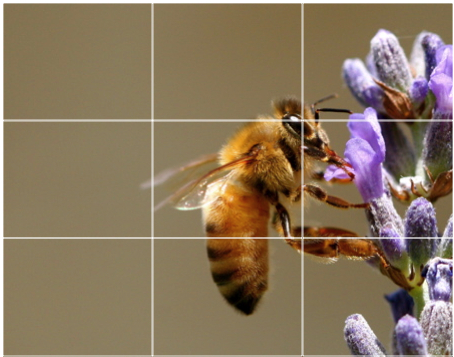Ideology is a fundamental part of any media product: be it film, music, comics, video games, newspapers or magazines. An ideology is a set of ideas that constitute ones goal's, expectations and actions. The goal of any ideology is to highlight a section of society, or a certain aspect of life, that is wrong - Or to promote a certain lifestyle that some seem to think are better. This can be either subtle or overt.
A popular example of this is V for Vendetta. The ideology it follows is that the government is corrupt, we cannot under government rule, if we are to survive equally we should have community based living.
NME magazine is a the music for the so called 'Indie' stereotype, following bands like Arctic Monkeys or The Strokes.
Friday, 27 January 2012
Wednesday, 25 January 2012
The Rule of Thirds
 The 'Rule of Thirds' is a common technique used by photographers to make their work seem more natural, and to capture the background effectively.
The 'Rule of Thirds' is a common technique used by photographers to make their work seem more natural, and to capture the background effectively.As a rule of thumb only one third of the frame should feature the subject of the photograph.a grid system is used across the lens or the line of sight of the camera to divide the frame perfectly into nine sections: the subject is captured in two or three of these segments, and the background is placed in the remaining seven / eight.
Tuesday, 24 January 2012
Semiotics
Semiotics means the use of symbols or emblems to signify what an object or idea is. It teaches us that just because we perceive the letter 'A' is perceived by the English speaking world to sound like it does and spell what it does, does not make it so to everyone, this is just how we've been trained or taught in our society.
There are two main theories associated with Semiotics. Ferdinand de Saussure's Dyadic Semiotic System is one of them. In this, there is the Signifier and the Signified. The Signifier is what is seen or what is there, and the Signified is what is meant or understood.
The second is Charles Sander Pierce's Triadic Semiotic System. This explains that there are three terms of state: The sign, the object, and the interpretant. One is a symbol that we assign meaning, we assing this meaning beacause 'something' must have a name, according to human nature, and the final is the interpreteant who is use, we carry out these operations to form language and meaning.
There are two main theories associated with Semiotics. Ferdinand de Saussure's Dyadic Semiotic System is one of them. In this, there is the Signifier and the Signified. The Signifier is what is seen or what is there, and the Signified is what is meant or understood.
The second is Charles Sander Pierce's Triadic Semiotic System. This explains that there are three terms of state: The sign, the object, and the interpretant. One is a symbol that we assign meaning, we assing this meaning beacause 'something' must have a name, according to human nature, and the final is the interpreteant who is use, we carry out these operations to form language and meaning.
Wednesday, 18 January 2012
There are two methods applied when creating questionnaires
The First is Qualitative.
- This method is when a questionnaire generates numerical data that can be easily stored by using: tick box (Multiple choice) questions, questions that require one word answers, or questions that require numerical answers.
The Second is Quantitative.
- This is when a questionnaire asks questions that cause the answerer to explain their answer more extensively, they do this by asking questions like why? or how?
The First is Qualitative.
- This method is when a questionnaire generates numerical data that can be easily stored by using: tick box (Multiple choice) questions, questions that require one word answers, or questions that require numerical answers.
The Second is Quantitative.
- This is when a questionnaire asks questions that cause the answerer to explain their answer more extensively, they do this by asking questions like why? or how?
Tuesday, 17 January 2012
Introduction to my blog
I am Callum Ferguson and this is my blog to record the progress of my media coursework. We are to create a mock up and rough draft of a college magazines contents and front cover; we are then to do the same, plus a finished copy of a music magazine featuring a local artist.
-- Callum 'Fergs' Ferguson
-- Callum 'Fergs' Ferguson
Subscribe to:
Comments (Atom)